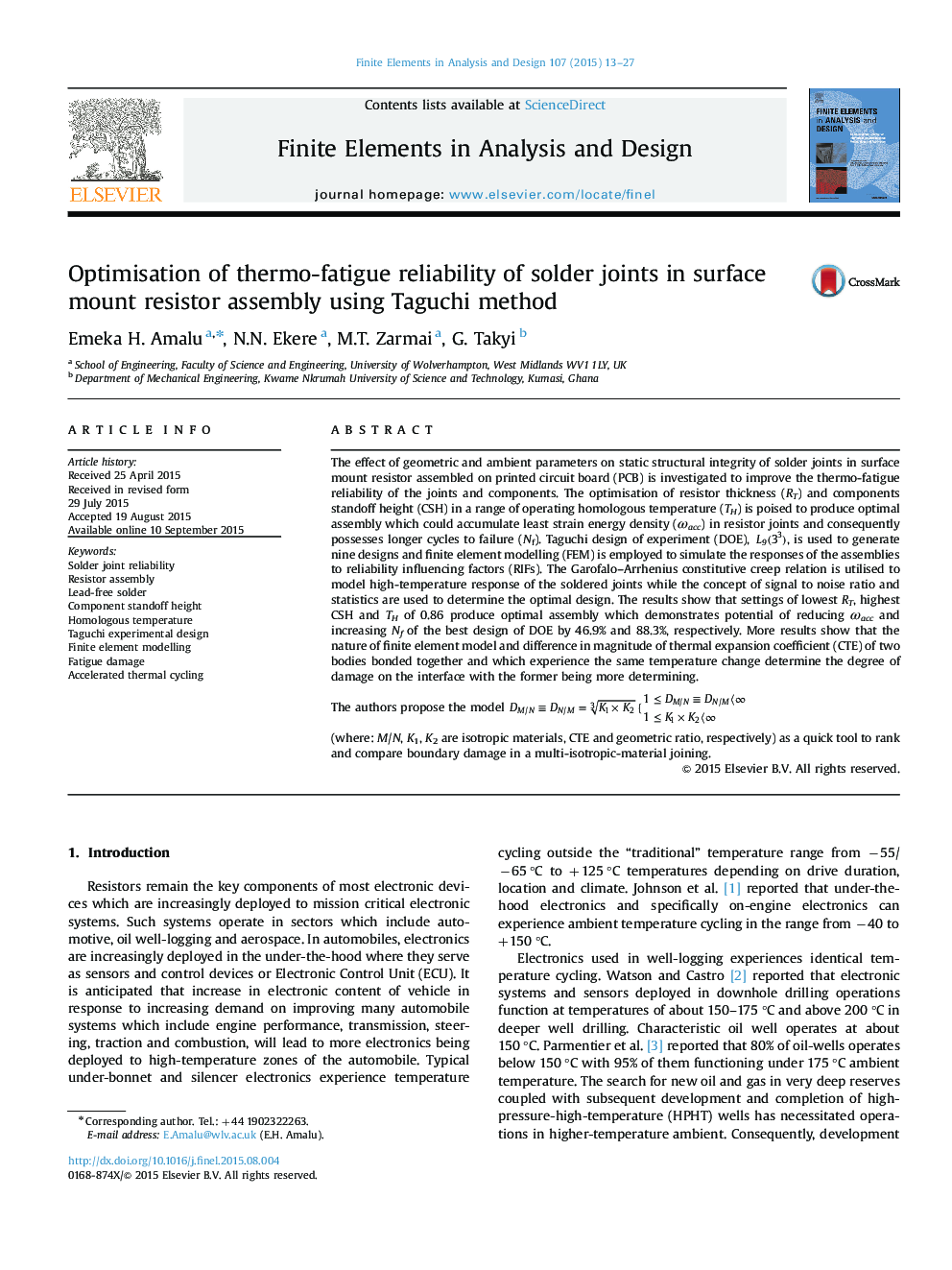| Article ID | Journal | Published Year | Pages | File Type |
|---|---|---|---|---|
| 514098 | Finite Elements in Analysis and Design | 2015 | 15 Pages |
•A combinationbination of DOE and FEM is used to optimise thermo-fatigue reliability in resistor solder joint.•Optimised design has thin die thickness and demonstrates low accumulation of damage in its solder joints.•A developed mathematical model has potential to identify the most susceptible interconnection boundary in multi-material joining.
The effect of geometric and ambient parameters on static structural integrity of solder joints in surface mount resistor assembled on printed circuit board (PCB) is investigated to improve the thermo-fatigue reliability of the joints and components. The optimisation of resistor thickness (RT) and components standoff height (CSH) in a range of operating homologous temperature (TH) is poised to produce optimal assembly which could accumulate least strain energy density (ωacc) in resistor joints and consequently possesses longer cycles to failure (Nf). Taguchi design of experiment (DOE), L9(33)L9(33), is used to generate nine designs and finite element modelling (FEM) is employed to simulate the responses of the assemblies to reliability influencing factors (RIFs). The Garofalo–Arrhenius constitutive creep relation is utilised to model high-temperature response of the soldered joints while the concept of signal to noise ratio and statistics are used to determine the optimal design. The results show that settings of lowest RT, highest CSH and TH of 0.86 produce optimal assembly which demonstrates potential of reducing ωacc and increasing Nf of the best design of DOE by 46.9% and 88.3%, respectively. More results show that the nature of finite element model and difference in magnitude of thermal expansion coefficient (CTE) of two bodies bonded together and which experience the same temperature change determine the degree of damage on the interface with the former being more determining.The authors propose the model DM/N≡DN/M=K1×K23{1≤DM/N≡DN/M⟨∞1≤K1×K2⟨∞(where: M/N, K1, K2 are isotropic materials, CTE and geometric ratio, respectively) as a quick tool to rank and compare boundary damage in a multi-isotropic-material joining.
